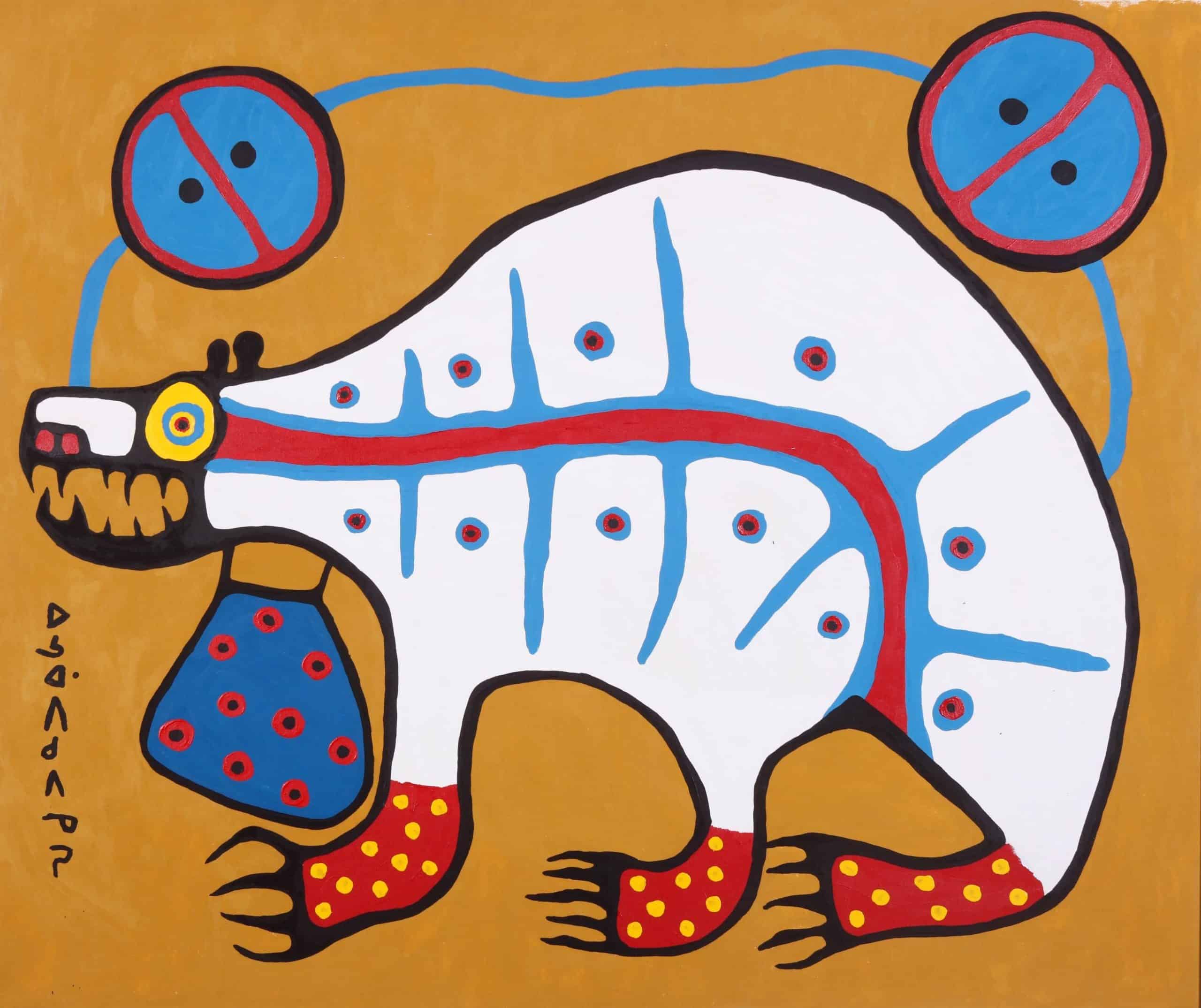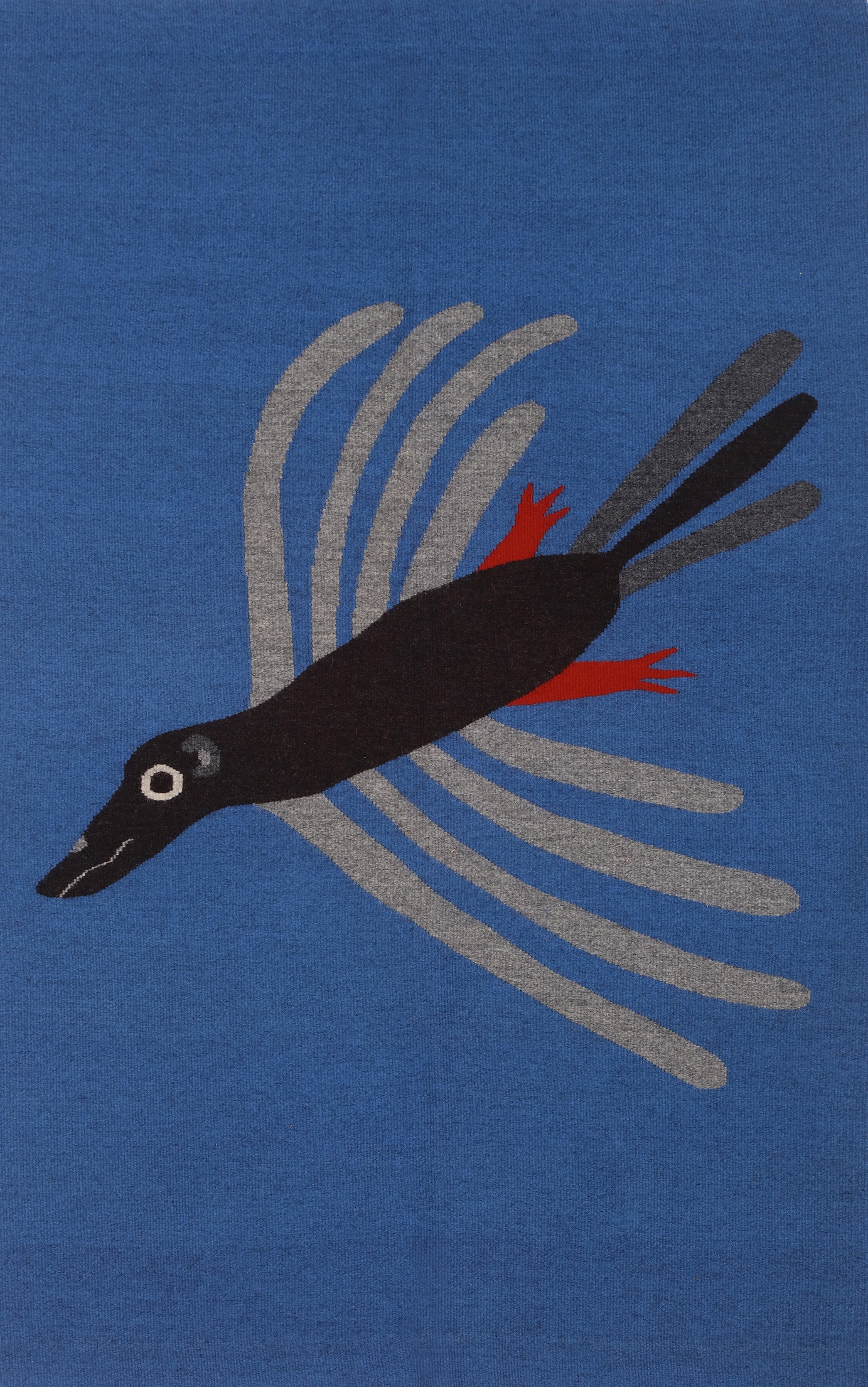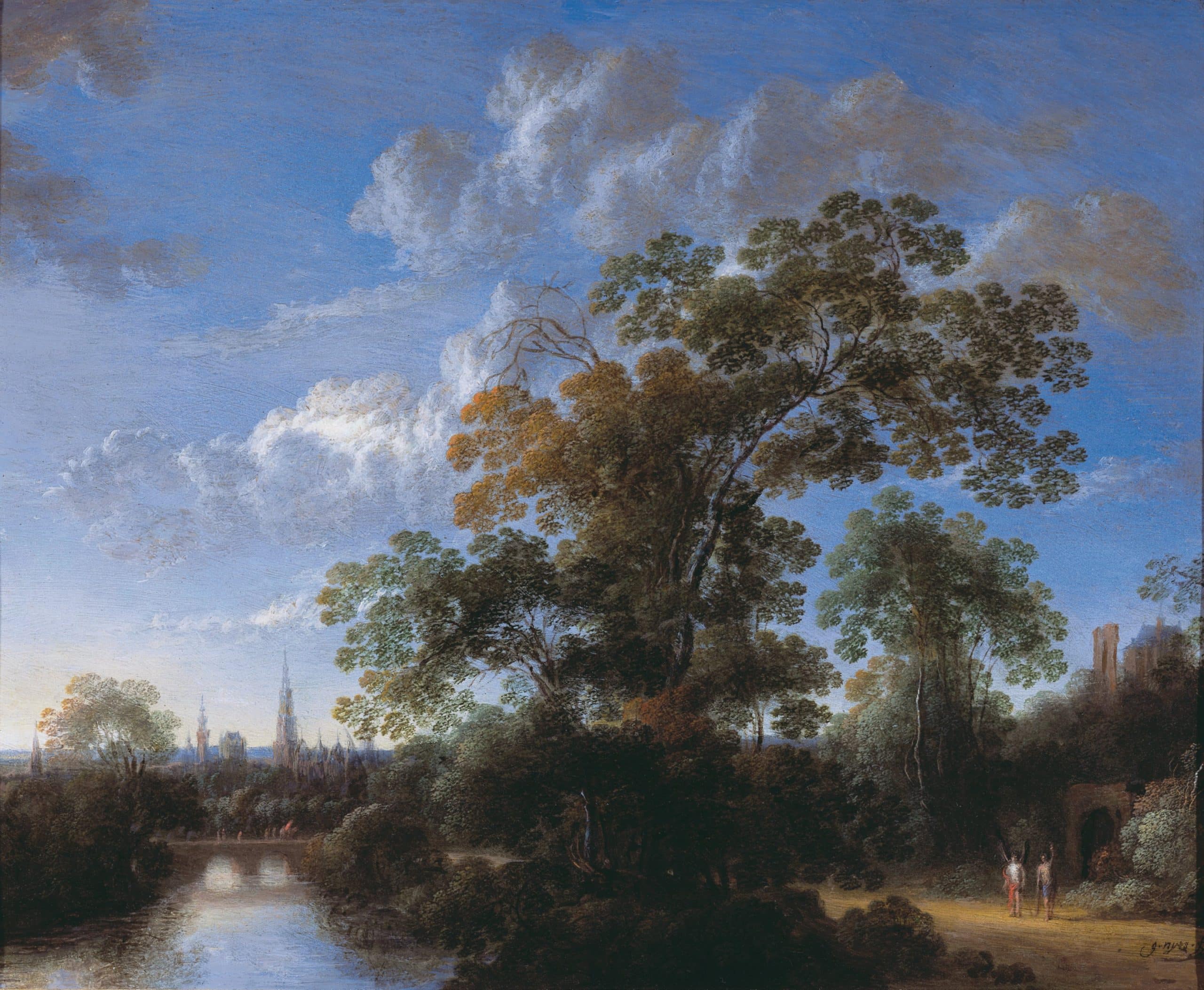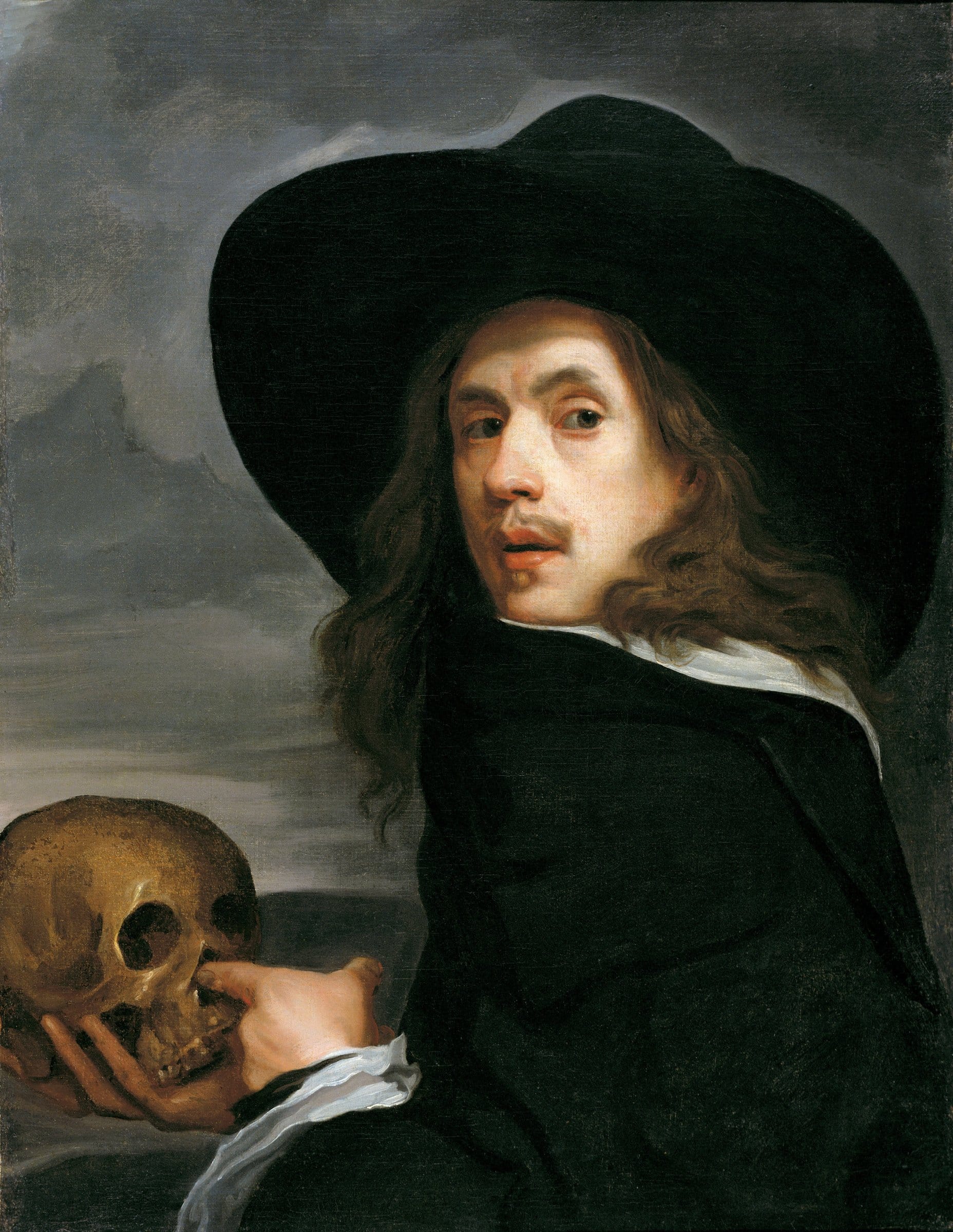
Norval Morrisseau, Sacred Medicine Bear, 1974, acrylic on canvas. Gift of Guardian Capital Group Limited, 2020. Permissions from the estate of Norval Morrisseau. OfficialMorrisseau.com

Malaya Akulukjuk, Untitled (Bird), around 1978, wool. Gift of Guardian Capital Group Limited, 2020. Photo by Bernard Clark
On view ON-SITE in Emergence: A Recent Gift of Indigenous Art, 1 July–12 November 2023.
Norval Morrisseau, Sacred Medicine Bear, 1974, acrylic on canvas. Gift of Guardian Capital Group Limited, 2020. Permissions from the estate of Norval Morrisseau. OfficialMorrisseau.com
Morrisseau held his first solo exhibition at Poloack Gallery in 1962, becoming the first Indigenous artist to be shown in a contemporary art gallery. As Carmen Robertson points out, “Morrisseau’s entry onto the art scene marked a turning point.”
Morrisseau’s importance to contemporary art in Canada cannot be overstated. He shaped the Woodland School of Art, was part of the Professional Native Indian Artists Inc, and inspired generations of artists.
Sacred Medicine Bear employs the colours of the four directions, red, blue, white, and yellow, as well as the artist’s characteristic “lines of communication,” as described in The Art of Norval Morrisseau issued through Pollock Gallery in 1979, that link figures together in a closed loop, marking a relationship of connectedness.
Malaya Akulukjuk, Untitled (Bird), around 1978, wool. Gift of Guardian Capital Group Limited, 2020. Photo: Bernard Clark
Pangniqtuuq established a weaving program in 1969, where local artists designed tapestries that were then woven on looms. As a respected community elder, Malaya Akulukjuk was the first local woman to be approached for her drawing designs. Throughout the 1970s, her designs were selected almost exclusively to be translated by weavers into tapestries. Single, bold figures float in two-dimensional space, typical of first generation Panniqtuuq woven design. When asked about these kinds of figures, Akulukjuk responded that they came to her in a dream or had been described to her by someone who had seen them.

Gillis Neyts, Landscape with Tobias and the Angel, with a View of Antwerp in the Background, 1660s, oil on copper. Gift of Alfred and Isabel Bader, 2012.

Michael Sweerts, Self-portrait with Skull, around 1661, oil on canvas. Gift of Alfred and Isabel Bader, 2004
On view OFF-SITE at Milwaukee Art Museum Art, Life, Legacy: Northern European Paintings in the Collection of Isabel and Alfred Bader, 29 September 2023–28 January 2024.
Gillis Neyts, Landscape with Tobias and the Angel, with a View of Antwerp in the Background, 1660s, oil on copper. Gift of Alfred and Isabel Bader, 2012.
On the left side of this small landscape on copper Neyts has depicted a river receding directly into the distance, where it is spanned by a bridge. Still further back rises the spire of Antwerp’s cathedral, accompanied by several of the city’s other monuments. Along the right bank of the river runs a road, on which stand two figures, both holding traveler’s walking sticks. They seem to be half-draped, suggesting the time period of antiquity. The one on the right raises his arm in an apparent salute to the viewer. His companion, dressed in red and white, has wings rising from his shoulders, identifying him as the Archangel Raphael accompanying the young Tobias on his journey. So, as was his habit, Neyts has created a fantasy landscape that incorporates both biblical characters and a view of a real city, transposing the story of Tobias into a contemporary setting to allow viewers to identify more closely with the story.
Michael Sweerts, Self-portrait with Skull, around 1661, oil on canvas. Gift of Alfred and Isabel Bader, 2004
In this self-portrait, the Flemish artist Michael Sweerts gazes at the viewer over his shoulder, a dynamic pose that came to connote the artist’s creative vitality. Brazenly inserting his finger into a skull, he seems to be openly taunting mortality. This is one of a number of provocative self-portraits in which Sweerts comments upon the power of art. His contemporaries valued portraits (as we do today) for their ability to transcend time by preserving the likenesses of loved ones long gone.